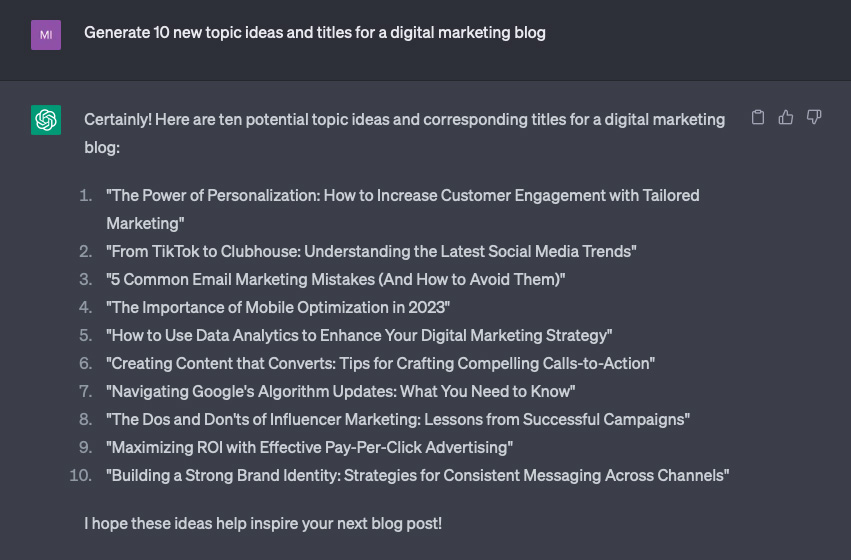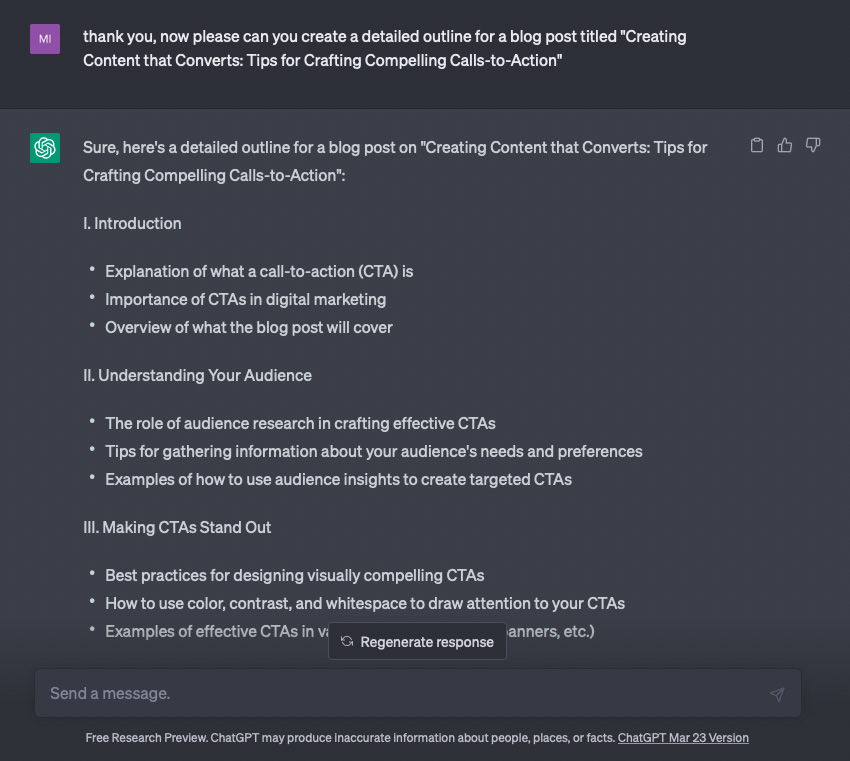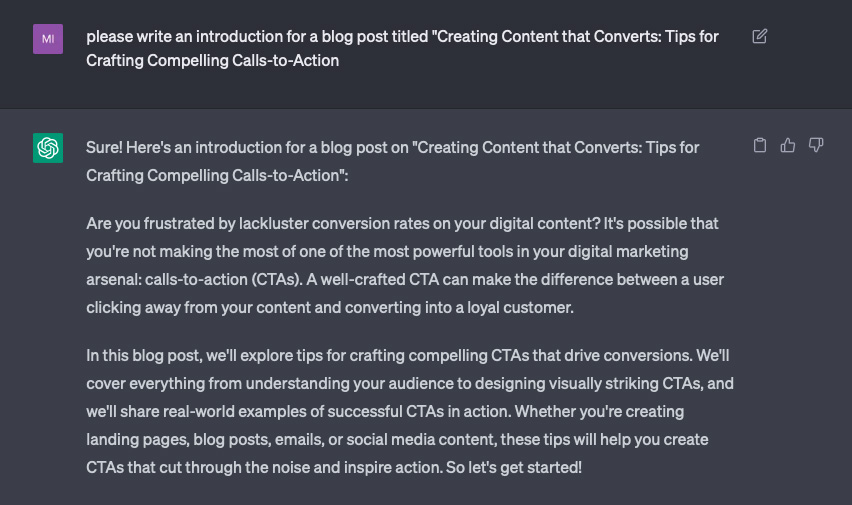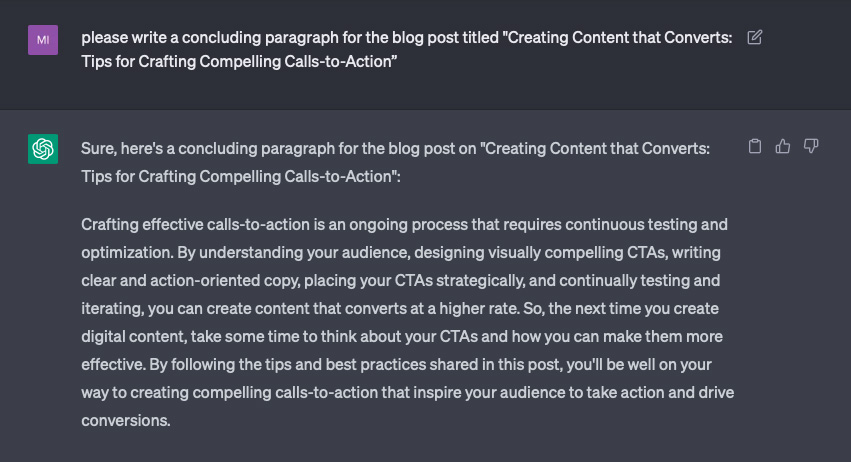2nd May, 2023
Unless you’ve been living in the mountains of Tibet, you’ve probably heard about ChatGPT. AI (Artificial Intelligence) has been around a while, however ChatGPT is a game-changer for online marketers, content creators, bloggers and more. With ChatGPT you can create blog content much quicker, it even helps to brainstorm post topics!

In this post I am going to share with you my own experiences with ChatGPT and AI content creation, giving a few tips along the way. If you are new to the world of blogging then please check out our ten tips for writing a blog post.
What is ChatGPT?
To quote Wikipedia “ChatGPT is an artificial intelligence chatbot developed by OpenAI and released in November 2022. It is built on top of OpenAI’s GPT-3.5 and GPT-4 foundational large language models and has been fine-tuned using both supervised and reinforcement learning techniques.”
How can ChatGPT help with blogging?
ChatGPT delivers a super quick and effective way of generating post topics, title suggestions, and content. ChatGPT can help you to map out and write an outline for your post, saving you time and money. For example you could say:
Generate 10 new topic ideas and titles for a digital marketing blog

With this data to hand, you can ask ChatGPT to write an outline for your blog post. For example you could input something like:
thank you, now please can you create a detailed outline for a blog post titled “Creating Content that Converts: Tips for Crafting Compelling Calls-to-Action”

Obviously you can edit this breakdown if needed, maybe check keywords against monthly search volumes. Next we can ask ChatGPT to create content for each section of this post. From what I have seen and read, tackling post content in sections generates better results than simply asking ChatGPT to write you a “catch-all” blog post.
can you tell me the best practices for designing visually compelling CTAs

This gives content writers, bloggers and marketing folk a great foundation to build on. Simply replicate the process and tweak as required, adding that “human touch” to your post. Another tip / suggestion is asking ChatGPT to compile you an introduction:
please write an introduction for a blog post titled “Creating Content that Converts: Tips for Crafting Compelling Calls-to-Action”

And there you have it, a pretty decent post intro generated in seconds! Again you may wish to tinker, edit or develop. If you intend to publish this content on your blog then you should rewrite the ChatGPT output in your own words. For example: you/your company could be an expert on the selected topic, ChatGPT may not make this obvious to a reader. You might also want to add/mention your brand name and company location, consider localised search results and brand awareness.
A final consideration is the sign-off, AKA your post conclusion. For this you can ask ChatGPT to create an ending based on the topic you’re writing about.
please write a concluding paragraph for the blog post titled “Creating Content that Converts: Tips for Crafting Compelling Calls-to-Action”

Remember it is important to read through, review and edit your ChatGPT generated post content. Make sure it reads well, data is accurate, it sounds like you and keeps in line with your brand identity. ChatGPT really does deliver on support for creators (no more writers block), and is a great starting point for post content. The better your input, the better your output. I hope you found some value in this post.
Until next time, keep it Tidy!
Mike
Post Disclaimer
ChatGPT is a language processing tool, so it’s merging what should sound good together. ChatGPT data is limited to a time cut-off point (the knowledge cut-off date is September 2021). Post content, topics, events, trends, tech and similar will need to bare this in mind. If asking for sources check the links as there is a chance they are dead, again due to the cut-off. Please fact check any ChatGPT stats or authoritative statements, as it’s a language processing tool it’s massaging things together, not knowing if it’s factual or not.